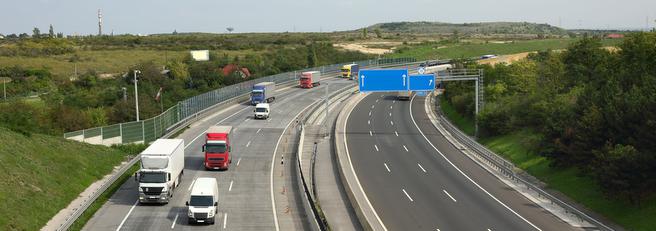Young Drivers Tips: Stay in your own lane
Greg Robar | Driving It Home

When I am out with new drivers, I often use errors made by other drivers as an example for problem solving. One of the most common errors we see drivers make is not staying in their own lane.
Drivers are frequently seen drifting from line to line or, even worse, over the lines into oncoming traffic or onto the gravel shoulder. There is one very simple solution to this problem; look farther ahead. It is that easy. Young Drivers of Canada teaches our student to look ahead to where their car will be in 12 to 15 seconds time at city speeds, 20 to 30 seconds ahead at freeway speeds.
We had an experienced driver call our office one day because he could not keep his new car centered in his lane. His old car had a center hood ornament which he had always lined up with the edge of the road. His new car does not have a hood ornament to help guide him. It took some discussion, but we convinced him he would be better off to look well ahead as it would not only keep him more centered in his lane, but would also help him spot problems much sooner.
There are many reasons drivers drift in their lane. One of the most serious reasons is texting while driving. Texting negatively impacts all key measures of driving performance. Texting drivers can take 35 per cent longer in reaction times and steering control is worsened by 91 per cent. Being ‘intexticated’ will also affect proper judgement, co-ordination and perception while driving.
On a recent lesson we had a ‘hand talker’ behind us. This driver rarely had his hands on the steering wheel, moved out of his lane continuously and made harsh corrections trying to stay in his lane. His speed was very inconsistent, and he was much too close to us. His gestures were lost to the person on the phone. He either did not understand how his poor driving could affect others on the road, or did not care, which makes him even more dangerous.
Drivers often take their eyes off the road for too long. This could include looking at the passenger they are talking to, taking too long to read a sign or looking down to wipe the spilled coffee off their leg. We tend to go where we look, and at higher speeds it will take no time at all to drift out of the lane. Every second glance must be straight ahead in order to keep us centered in our lane and spotting problems early.
We are permitted to drift out of our lane to avoid objects or hazards in the lane; however, it must be only when it is safe to do so. When we cross the center line to avoid a problem, or go around a cyclist, for example, this must only be done when there is no approaching traffic. If there is oncoming traffic, we must yield to them until there is a proper gap to go around. We often see drivers just steer around a problem with no regard for oncoming vehicles. This forces the other driver to take evasive action by swerving or hard braking possibly making the problem even worse.
If we all look well ahead to keep centered and spot problems much sooner we will be able to respond rather than react to our driving challenges more safely.
Greg Robar is owner and instructor of Young Drivers in the Valley and South Shore.
